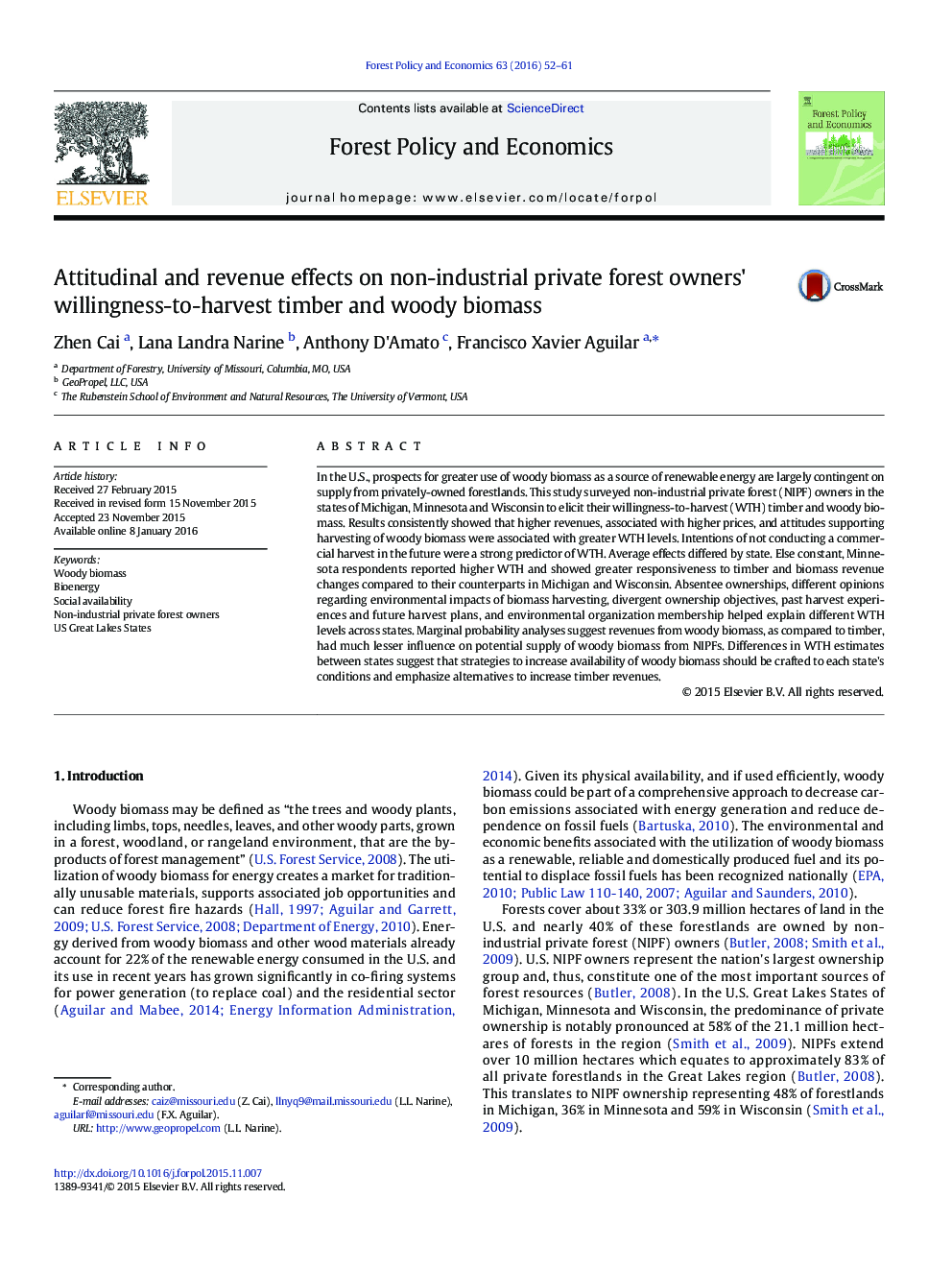| کد مقاله | کد نشریه | سال انتشار | مقاله انگلیسی | نسخه تمام متن |
|---|---|---|---|---|
| 91668 | 159829 | 2016 | 10 صفحه PDF | دانلود رایگان |
• Timber revenues have a dominant role in non-industrial private forest owners' willingness-to-harvest timber and woody biomass.
• Revenues from harvesting biomass only are unlikely to significantly influence the social availability of woody biomass.
• Factors influencing NIPF landowners' WTH vary across U.S. Great Lakes States.
• Local concerns should be addressed to increase woody biomass supply from NIPFs.
In the U.S., prospects for greater use of woody biomass as a source of renewable energy are largely contingent on supply from privately-owned forestlands. This study surveyed non-industrial private forest (NIPF) owners in the states of Michigan, Minnesota and Wisconsin to elicit their willingness-to-harvest (WTH) timber and woody biomass. Results consistently showed that higher revenues, associated with higher prices, and attitudes supporting harvesting of woody biomass were associated with greater WTH levels. Intentions of not conducting a commercial harvest in the future were a strong predictor of WTH. Average effects differed by state. Else constant, Minnesota respondents reported higher WTH and showed greater responsiveness to timber and biomass revenue changes compared to their counterparts in Michigan and Wisconsin. Absentee ownerships, different opinions regarding environmental impacts of biomass harvesting, divergent ownership objectives, past harvest experiences and future harvest plans, and environmental organization membership helped explain different WTH levels across states. Marginal probability analyses suggest revenues from woody biomass, as compared to timber, had much lesser influence on potential supply of woody biomass from NIPFs. Differences in WTH estimates between states suggest that strategies to increase availability of woody biomass should be crafted to each state's conditions and emphasize alternatives to increase timber revenues.
Journal: Forest Policy and Economics - Volume 63, February 2016, Pages 52–61
